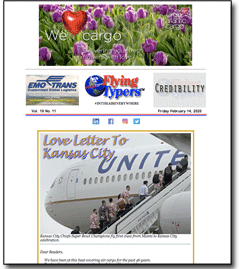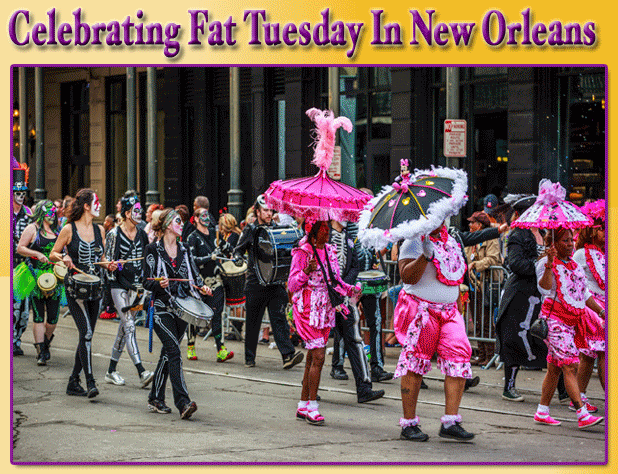 |
The great annual celebration
that we so dearly love and have celebrated in our publication for
the past 45 years occurs tomorrow.
February 25 marks Mardi Gras,
otherwise known as Fat Tuesday, continuing
the Carnival celebrations of New Orleans. Also known as Shrove Tuesday,
the events celebrate the Christian feasts of the Epiphany that culminate
on the day before Ash Wednesday.
Mardi Gras in jazz-rich New
Orleans is like nowhere else in the world.
Mardi Gras is French for
"Fat Tuesday," reflecting the practice of the last night
of eating rich, fatty foods before the ritual sacrifices and fasting
of the Lenten season that continues until Easter Sunday.
New Orleans is also home
to the great Tulane University.
For many years during the
formative period of organized air cargo, the
great airport cargo pioneer Larry Johnson of MSY was punching way
above the weight of that gateway, working with people all over the
world to put our industry on the map.
Fortunately, in 2020 we have
our friend and colleague Michael Webber, Associate Vice President
of Landrum & Brown, the Global Aviation Planning & Development
group, to represent the holiday from a table at Cafe du Monde in
the French Quarter. Beignets
in hand, he's ready to share his views on a unique celebration and
a great American city.
From Kansas City To New
Orleans
Born and raised in Kansas City (as FlyingTypers readers now know), I moved to New Orleans
in the late 1980’s by the generosity of a full academic scholarship
to attend Tulane University’s MBA program.
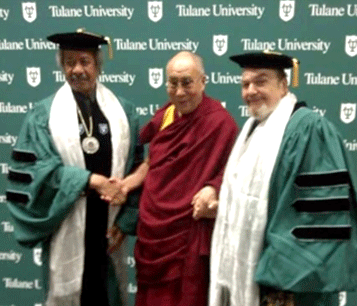 I
had a few options but only one that assured me the opportunity to
hear the music of Dr. John and the Neville Brothers with great regularity.
Tulane had an excellent reputation as an international business
school with an emphasis on Latin America – perfect for someone
whose undergraduate studies had been equally focused on Business
Administration and Spanish Literature. I
had a few options but only one that assured me the opportunity to
hear the music of Dr. John and the Neville Brothers with great regularity.
Tulane had an excellent reputation as an international business
school with an emphasis on Latin America – perfect for someone
whose undergraduate studies had been equally focused on Business
Administration and Spanish Literature.
Besides, Tulane seemed like
the only place where one might someday encounter the likes of Allen
Toussaint, the 14th Dalai Lama and Dr. John as a power trio.
I met my future wife during
my first year at Tulane and we would welcome our first-born during
final exams of the second year. The day that Marta and I were married
by a justice-of-the-peace, New Orleans was having a typical torrential
downpour that left the groom soaked and caked in mud. I understand
that in some cultures that is considered a good omen but our reception
was held in my brother-in-law’s home, which would be destroyed
by Hurricane Katrina years later.
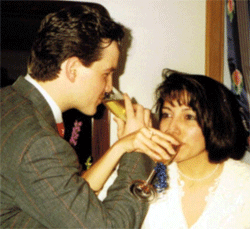 With a new baby, I needed
to find work immediately and began contacting a variety of local
characters associated with New Orleans’ trade and transportation
community. With a new baby, I needed
to find work immediately and began contacting a variety of local
characters associated with New Orleans’ trade and transportation
community.
New Orleans Organized Cargo
I became the managing director
of a newly-minted trade association with Board members representing
the Port of New Orleans, the New Orleans Aviation Board, the New
Orleans Consular Corps and the International Freight Forwarders
and Customs Brokers Association of New Orleans (IFFCBANO, for short!)
Traveling around Central
America with a pack of New Orleanians seemed exotic. These were
great years for New Orleans and for New Orleans International Airport.
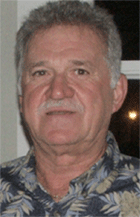 The
Great Larry Johnson The
Great Larry Johnson
I was learning the air cargo
business from some of the best people imaginable – most obviously
Larry Johnson who was MSY’s Air Cargo Manager, but also freight
forwarders like John Hyatt from the Irwin Brown Company and airline
veterans like Roger Mascaro from El Salvador’s TACA International
Airlines.
Thanks very largely to the
efforts of Hyatt, New Orleans would have the most attention-garnering
booths at Central American trade shows, hauling a Dixieland jazz
ensemble.
Long Descent During Times
of Change
Sadly, whatever momentum
we may have had seemed to dissipate over a number of years.
Our trade association was
absorbed into a newly-formed Pan-American Commission by then-Louisiana
governor Buddy Roemer who promptly failed to qualify for the run-off
in his next election – losing to oft-indicted Edwin Edwards
and former Ku Klux Klansman David Duke. I remained in New Orleans
a little longer by joining the international department of a great
old Louisiana bank (First Commerce Corporation) before taking my
first full-time airport job as the Director of Marketing & Economic
Development for the Airport Authority up Interstate 55 in Jackson,
MS.
Larry Johnson stayed with
the MSY until his retirement a couple of decades later. I had dinner
with him a few years back when he joined me at my brother-in-law’s
restaurant on Canal Street. He looked good and seemed content in
his retirement. He happily recalled when my wife and daughter (then
a newborn and now-29 years old) would be at the terminal at MSY
to see me off on trade missions. He is an uncommon gentleman.
For many of us in the industry,
including people who may have been his competitors, Larry was among
our first thoughts as reports came in about Katrina’s devastation
and more specifically, about the makeshift morgue that MSY’s
air cargo facilities had become. Our friendly forwarder John Hyatt
had to chop his way with an axe through his home’s attic in
order to save himself and his family.
MSY Today
Like much else about New
Orleans, the extent to which MSY has recovered is debatable. Always
a strong tourism attraction and conference favorite, MSY ranked
#42 among North American airports in Calendar Year 2018, according
to Airports Council International – North America. MSY accommodated
slightly more than 13 million passengers for the year. MSY ranked
significantly lower (#61) in air cargo for the same year, accommodating
only about 56,000 metric tons for the year – about 35% less
than it had in Calendar Year 2000.
While double-digit losses
were common among U.S. airports for that period, those of us who
once aspired to see New Orleans International Airport gain prominence
as an international air cargo gateway cannot help but be disappointed.
Since Larry Johnson’s
retirement, evidence of enthusiasm for air cargo development has
seemed inconsistent at best.
Miss New Orleans
I’ll forever be grateful
for having lived in that pre-Katrina version of New Orleans. Even
in its current condition, New Orleans is—to me—the American
city least like any other American city and it was as close to the
ideal of the “melting pot” as any American city ever
attained.
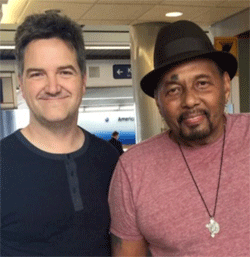 Homage
To The Crescent City Homage
To The Crescent City
Legendary songwriter Robbie
Robertson (The Band) named his album ‘Storyville for New Orleans’
old red-light district and much of its content was inspired by the
Crescent City. Perhaps fittingly, he compared New Orleans to the
dance of the seven veils.
Eventually, you may get to
see everything but you can’t be in a hurry about it.
I left New Orleans in my
twenties and am now in my fifties.
The city still intrigues
and energized me every time I visit. I hope it has an encore or
two left in it.
I know that my own past pops
up in the most unexpected places – like when I found myself
catching up with the great Aaron Neville not long ago in Chicago.
Michael Webber
Music For Fat Tuesday 2020
Dear Readers,
Don’t see how we get out of
this memory without some manner of Playlist.
Even if we could, why would we?
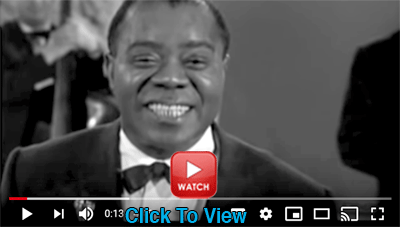 Let’s
start with the New Orleans native Louis Armstrong (right),
who for a while was one of the most famous men on the planet, doing
one of the most beloved songs of the previous century. Let’s
start with the New Orleans native Louis Armstrong (right),
who for a while was one of the most famous men on the planet, doing
one of the most beloved songs of the previous century.
An architect of rock ‘n’
roll. One night during graduate school, I was in line ahead of Fats
Domino at a local donut chain. Awed into a stupor by the proximity
of a living idol, I asked if I could buy his dozen for him. He politely
declined with the admonition that the probable college boy should
probably save his money.
One of the songs most associated with New Orleans.
How about the extraordinary Professor
Longhair backed here by the Meters – the funkiest band
America likely ever produced.
Allen
Toussaint was one of New Orleans’ renaissance men –
as influential as a producer and songwriter as he was as a recording
artist. No less than Paul McCartney would record his album Venus
& Mars at Toussaint’s New Orleans studio and ask the owner,
himself to play on it.
https://www.youtube.com/watch?v=_bRqsed2H98
The singular Dr.
John. Nobody reminds me of him.
Future founding member of the Meters
and his later namesake band, Art Neville first cut this song in the 1950’s, then rerecorded it (this version) decades later
with the Meters. When I lived in New Orleans, Mardi Gras wasn’t
“on” until I’d heard the Neville Brothers (anchored
by Art) do it.
One of the most romantic songs ever
recorded and certainly one of America’s most distinctive vocalists.
Here’s Art Neville’s immortal “Tell
It Like It Is.”
The Band’s Robbie Robertson
is a Canadian but a long-time fan of New Orleans, making his second
solo album Storyville very largely as a tribute to the city.
“Do
You Know What It Means to Miss New Orleans”. I do and
I miss it often.
|




